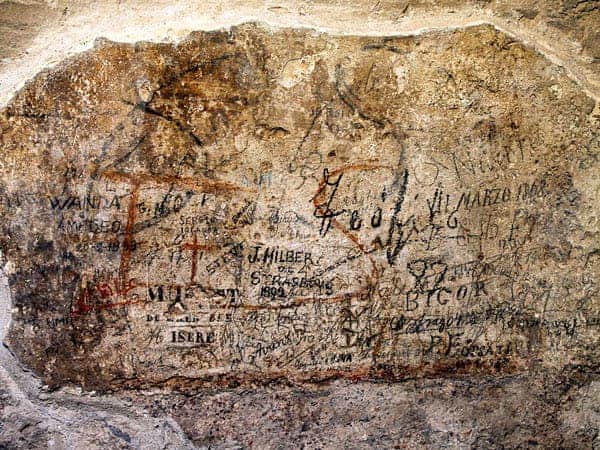A facelift of the Colosseum brought to light centuries of markings and inscriptions on its walls, but archaeologists have little idea to what they mean.
Removing the accumulated grime and calcification, experts discovered layers of inscriptions on the section of a wall depicted above, ancient designs in red and fade grey blended with black left by visitors in modern times. Back in its glory days, in the first century AD, the arena could host as many as 50.000 people (more than most modern stadiums now), and had many numbered passages which not only allowed spectators to get in and out quickly, but also separated the high and mighty from… everyone else. The facelift currently under development will cost over $30 million.
The wall above marked the entrance of a lower tier society class, where women, children and slaves could watch the massacre taking place in the arena. Even in the dim light of this passage, the designs painted in red would have been easy to see against a background of white plaster, but much like today’s toilet drawings will be really hard to understand 2.000 years from now, researchers are only guessing what this could mean.

“That was the single most popular image to draw in ancient graffiti,” she says.
But modern inscriptions can also be found, sadly some covering ancient writings. In 1892 for example, J. Milber wanted the world to know that he had traveled from the city of Strasbourg.
“Writers were aware of being in a historic place,” said Benefiel. “They were making a mark to emphasize their presence.”
Officials in Rome announced they will also open this passage to the public, preventing them from adding future inscriptions.
Also read: Roman mosaic found in Turkey










